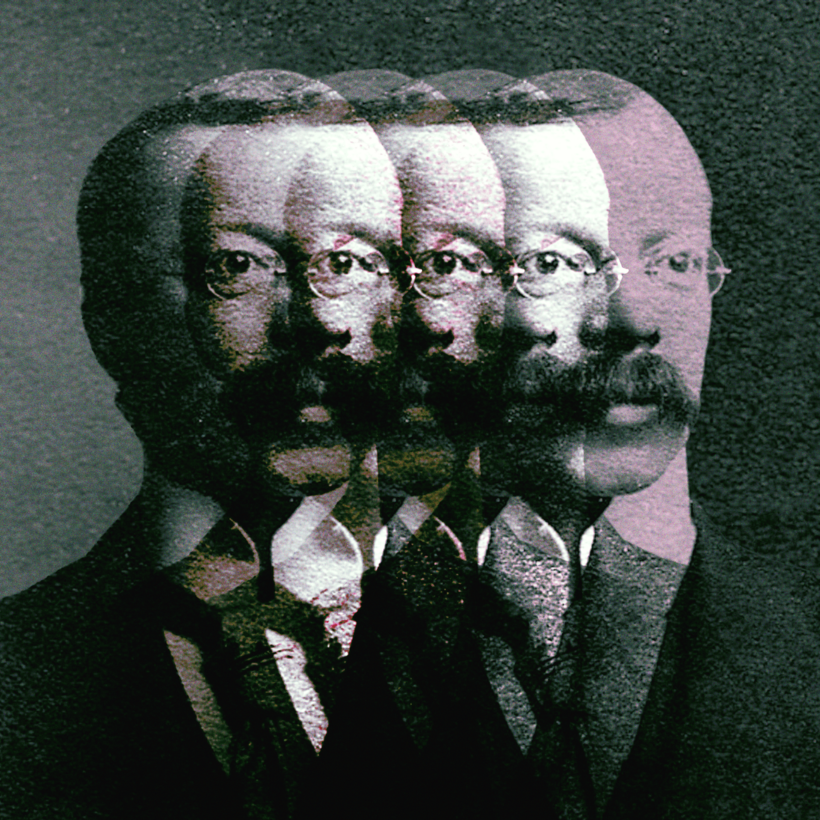On the morning of Sunday, January 24, 1892, a tragedy struck a young couple in Salt Lake City. Hawley and Charlotte Crippen had been married for four years and had a small son. For a while they had drifted from state to state, moving from Detroit to San Diego and then to New York. But here in Utah they had at last settled down. Hawley was building a reputation as an eye and ear surgeon and they were set fair for a bright future.
Then, on a cold day in the desert state, fate dealt them a cruel hand. At ten that morning, Charlotte suddenly put her hand to her head and fell in a heap to the floor. In desperation, Hawley called his colleague Dr Dart, the president of the Utah homeopathic medical association.
But by the time Dart arrived, it was all over. Charlotte was dead, struck down at just 33. On the death certificate Dart scribbled the word “apoplexy” and signed his name. It never occurred to him to hesitate or to ask more questions. Why would he? Why would Dr Crippen have wanted to kill his wife?
The story of how Crippen married again, moved to north London, fell in love with his typist, murdered his second wife, Belle, in 1910 and fled across the Atlantic, triggering one of the most celebrated pursuits in modern history, is well known. But the historian Hallie Rubenhold, whose award-winning book The Five explored the lives of Jack the Ripper’s victims, thinks we have been telling it all wrong. Too often, she argues, writers have placed Crippen at the heart of the story, ignoring or caricaturing the women whose lives he touched. Her mission is to put them center stage.
Does she succeed? I have to confess that when I first flicked through the pages and noticed Rubenhold praising Crippen’s murdered wife Belle as “a woman who lived her truth” my heart sank. But this is the only vaguely false note in an otherwise thoughtful, humane and gripping book, the kind of popular history you devour in a single sitting.
As in Rubenhold’s Ripper book, this is a true-crime narrative that is not just a cracking story, but also a window onto social history. The author is brilliant at evoking the lost worlds of the Gilded Age in New York, with its “forests of criss-crossed, riveted, rusting iron girders”, and the Edwardian music hall, with its “ballet dancers, ventriloquists, acrobats [and] magicians”. She explores the booming trade in homeopathic medicine, the explosive growth of the mass media, and even the excitement surrounding the new instant communications. Even readers indifferent to lurid murder stories — do such people really exist? — will surely find this a fascinating read.
Three people, inevitably, dominate her story. One is Crippen, whom many authors treat as a downtrodden, faintly romantic nonentity. Rubenhold takes a very different view. Her Hawley Crippen, born in Michigan in 1862, is a much darker figure, greedy and unethical, who began his career as a homeopathic doctor but became a swindler, selling quack remedies (“Dr Drouet’s Genuine Papier Anti-Catarrhal”) to the gullible.
As Rubenhold sees it, Crippen loved to prey on women’s anxieties about their health, and perhaps this sheds some light on the mysterious death of his first wife in 1892. Later, one of Charlotte’s brothers suggested that Crippen had been forcing her to have abortions and a neighbor claimed that he had physically abused her. Sensationalist gossip or something more? We can’t be sure, but his later behavior hardly inspires much confidence in his performance as a husband.
The second figure is the tragic Belle, who was born with the splendid name Kunigunde Mackamotzki in Brooklyn in 1873. (She changed her identity several times, eventually picking the name Belle Elmore when she tried to reinvent herself as a music hall star.) She met Crippen in decidedly unromantic circumstances: she was an unmarried, pregnant 18-year-old, while he was assisting the doctor who carried out her abortion.
Most accounts of her unhappy life dismiss her as blowsy and shrewish but Rubenhold sketches her with gentle compassion, describing her fondness for jewelry and enthusiasm for the London stage. Indeed, the passages on Belle’s work for the Music Hall Ladies’ Guild, where she found a sense of purpose and sisterly solidarity among the former singers and dancers, are some of the most moving in the book.
Perhaps surprisingly, however, Rubenhold’s most compelling figure is the third member of the trio, the typist Ethel Le Neve. Born in Diss, Norfolk, in 1883, she was a decade younger than Belle and met Crippen in London 12 years later when he was selling bizarre powders, plasters and “ear antiseptics”. Much of Le Neve’s inner life remains a mystery, but she must have been aware that she was working for a fraudster. “Not only was she privy to his machinations and read his daily correspondence,” Rubenhold points out, but “his letters to her reveal that over the years he had schooled her in the fundamentals of running a successful patent medicine scam”.
This, Rubenhold argues, is one of the keys to the case. By January 1910, Crippen and Le Neve had been sleeping together for three years, but she was losing patience with his reluctance to leave his wife and marry her. In other circumstances he might simply have closed his ears or persuaded her to elope abroad, as many other couples did in similar situations. But Le Neve considered it “terrible” to leave her family for a new life “thousands of miles across the sea” — and she knew enough about his scams and swindles to be a threat.
So, in desperation, this cold, callous man fell back on his medical training. On the night of January 31, he almost certainly poisoned Belle with hyoscine hydrobromide, a powerful sedative, hoping to make it appear that she had suffered a heart attack in her sleep. Rubenhold suspects that he misjudged the dose; perhaps Belle became delirious and fought back. Perhaps, in desperation, Crippen shot her. That would explain why he later beheaded and dismembered her corpse, removing the bones and burying the remains beneath quicklime in the cellar. Quite rightly, Rubenhold refuses to spare the reader the horror of this scene, pointing out that “the disorder, the blood, the hideous mess would have been indescribable, unimaginable, inhuman”.
What happened next has become part of the folklore of the Edwardian era: the flight by Crippen and Le Neve (disguised as a boy) to Rotterdam and Brussels, their failed escape across the Atlantic on the SS Montrose, the pivotal role of the wireless telegraph in tracking them down and the media jamboree of Crippen’s Old Bailey trial.
Even though we know where the story is leading, Rubenhold makes it tremendously exciting. Yet she never loses sight of the tragedy at its center: the woman sacrificed to the lust and greed of a little man from small-town Michigan who ended his life on the scaffold and a typist from Norfolk who lived for more than a half a century afterwards without expressing a single word of compassion or remorse.
Dominic Sandbrook co-hosts the podcast The Rest Is History and is the author of eight books, including Adventures in Time: The Six Wives of Henry VIII

